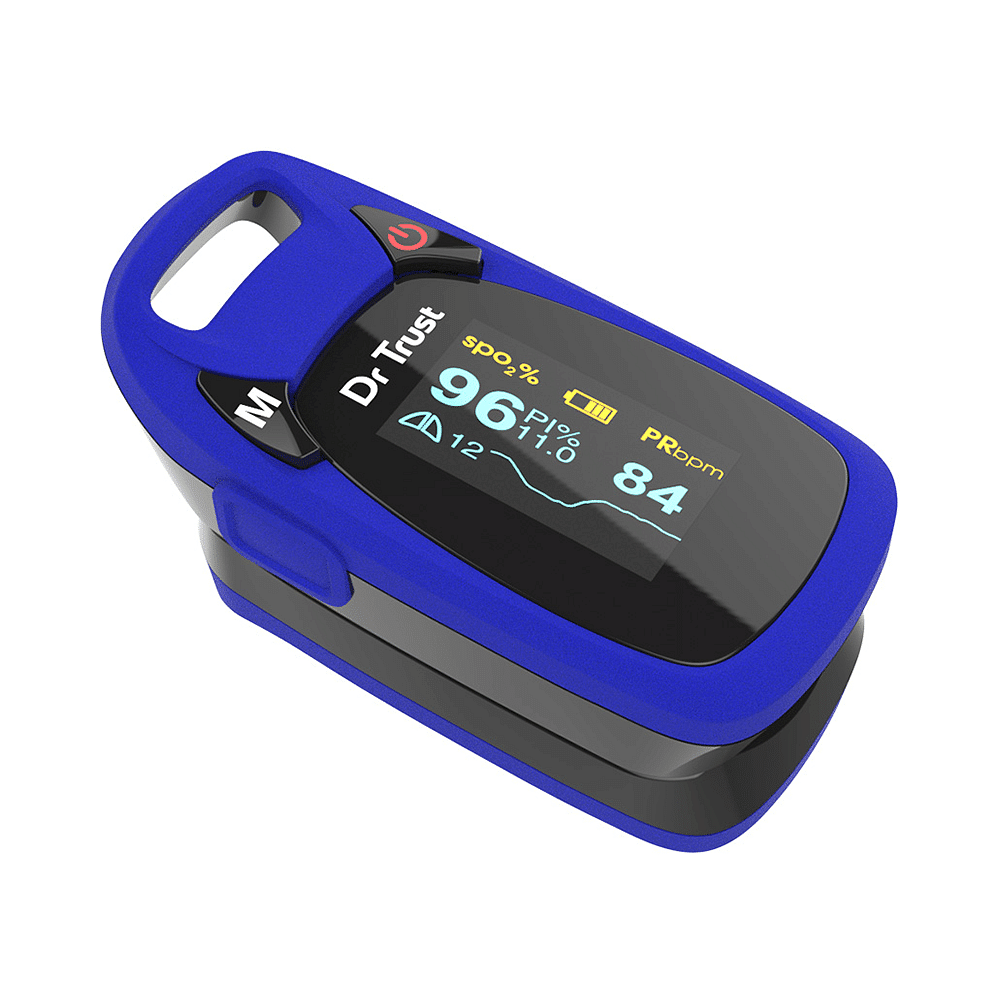
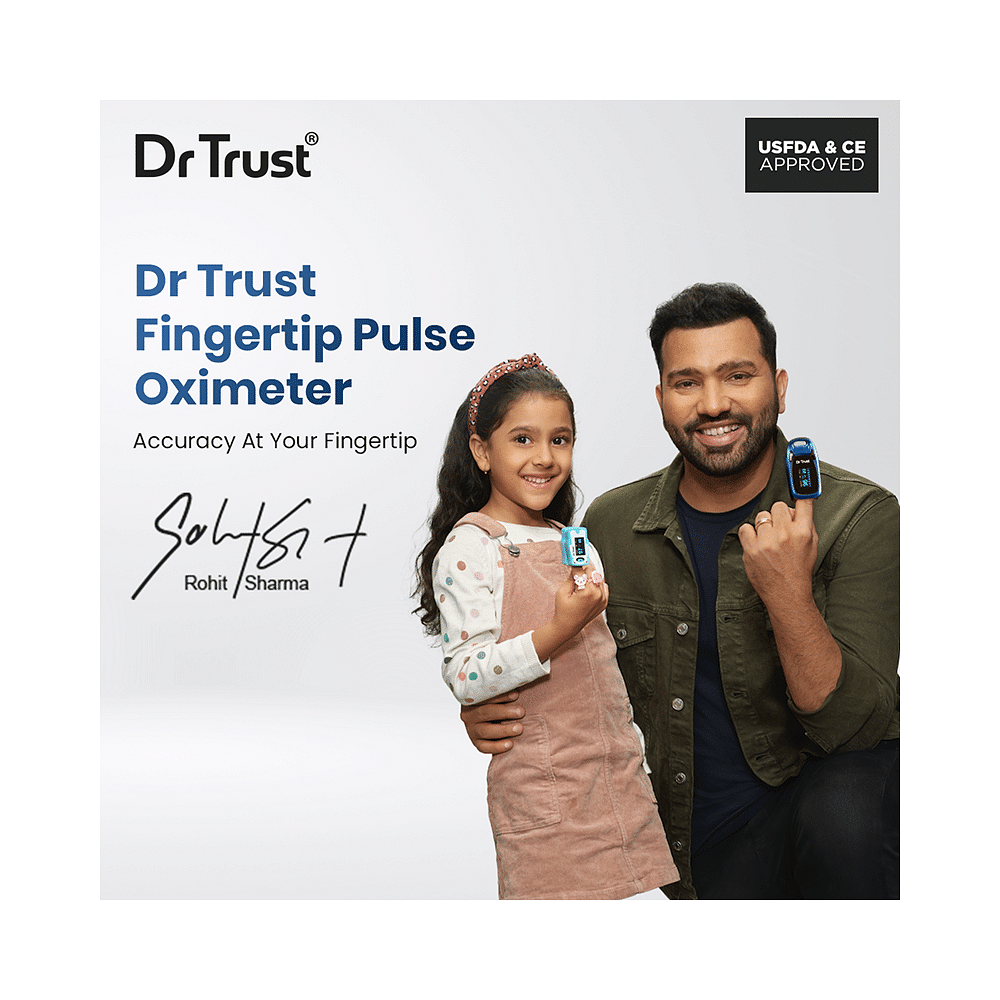
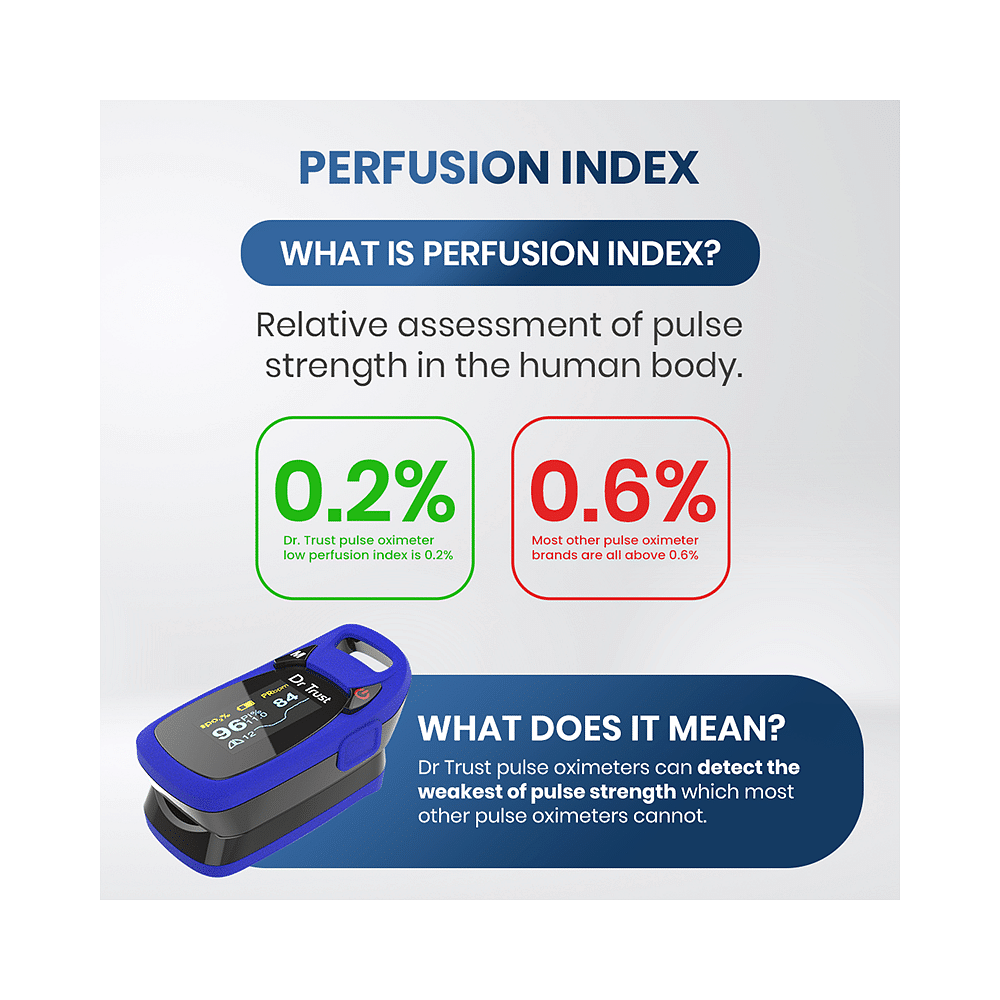
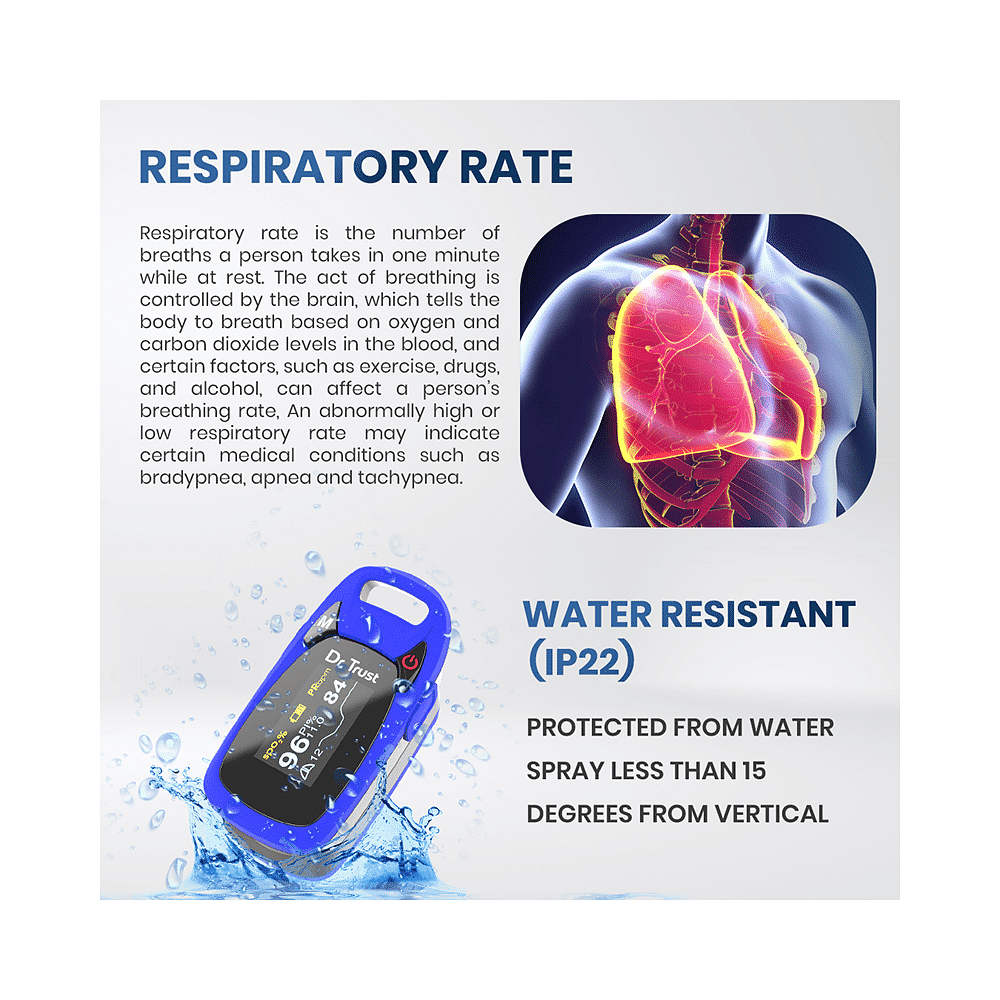
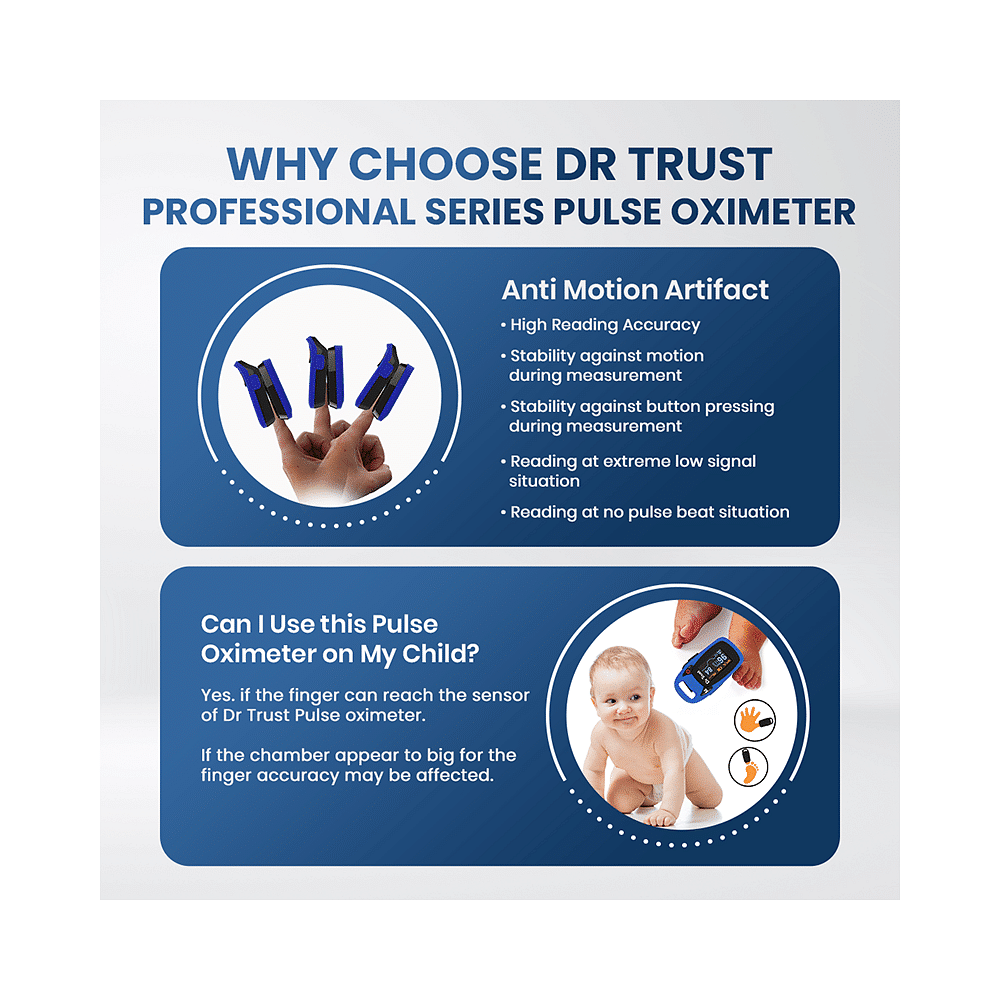
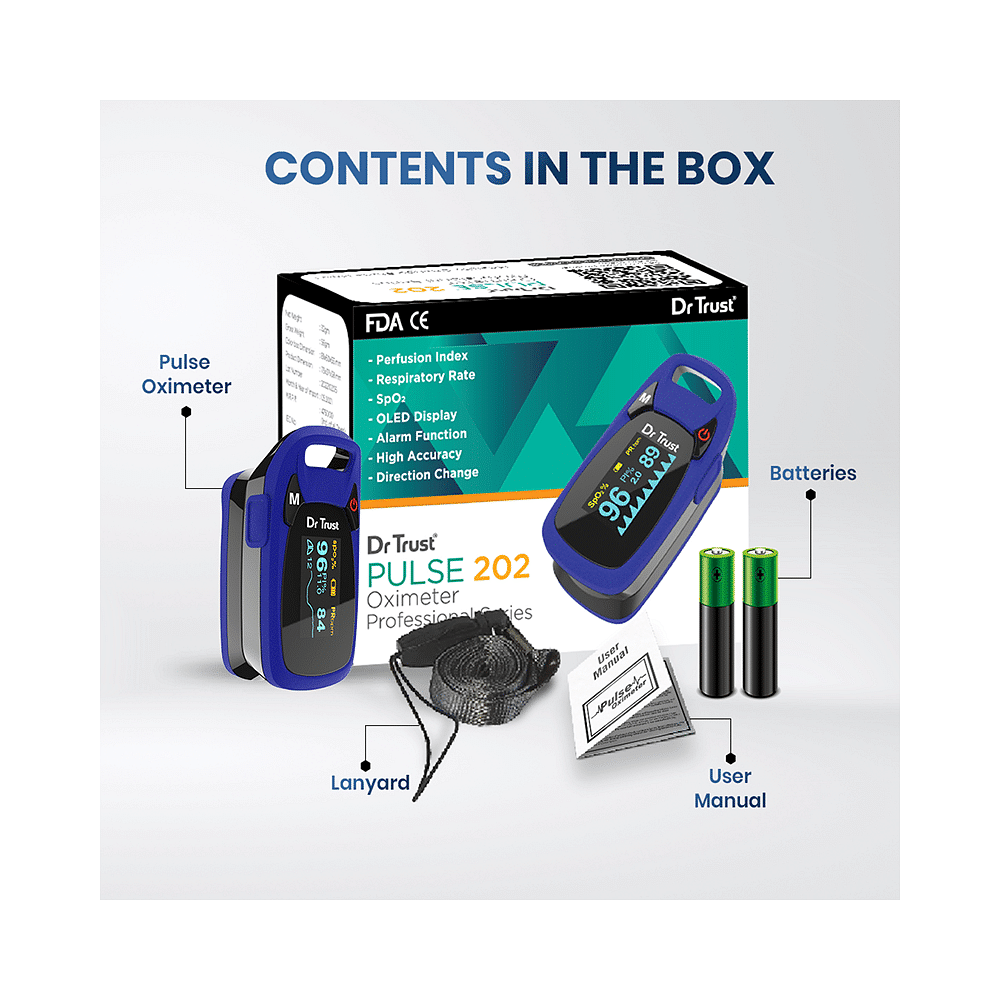
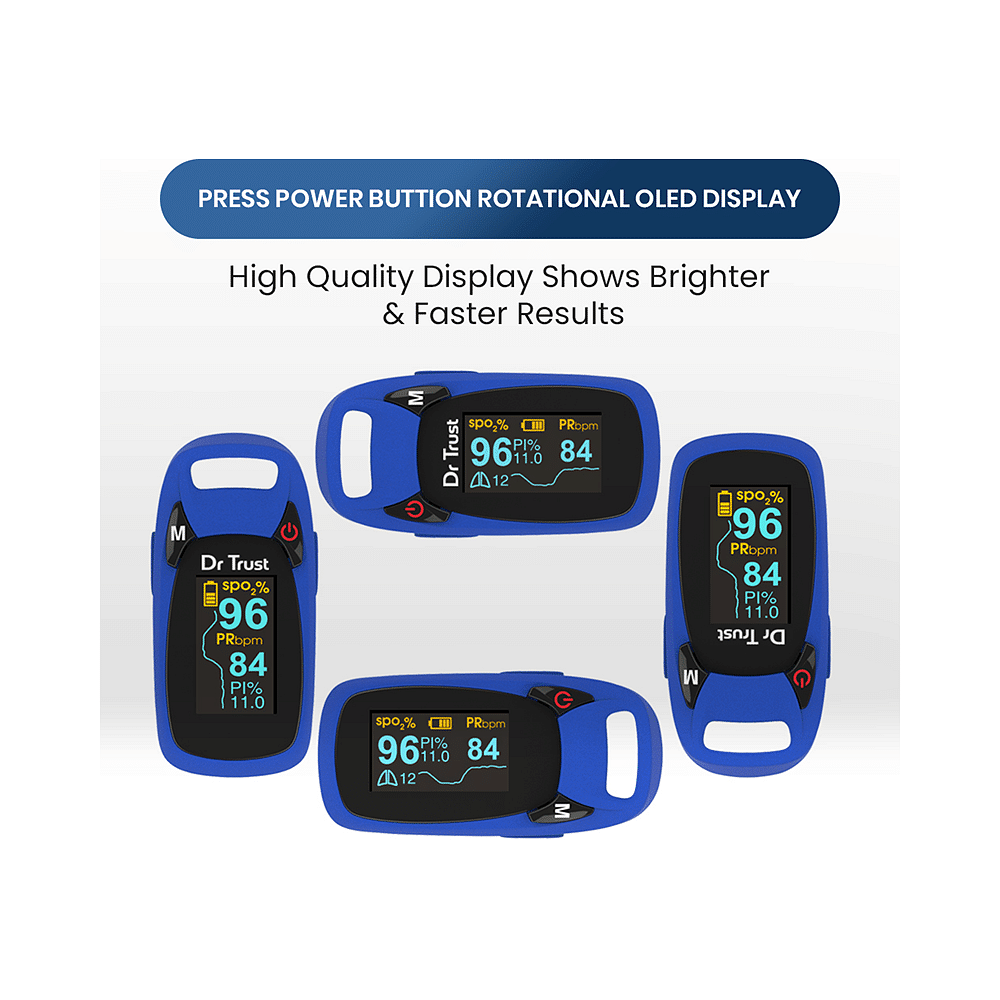
Dr Trust USA Professional Series Finger Tip Pulse Oximeter Blue
Manufacturer
Nureca Limited, India
Key Information
Short Description
Dr. Trust USA Professional Series Finger Tip Pulse Oximeter is a non-invasive device that measures pulse rate, blood oxygen saturation levels, and blood perfusion index. It is suitable for people with lung problems, respiratory issues, and COVID-19 patients.
Dosage Form
Finger Tip Pulse Oximeter
Introduction
The Dr. Trust USA Professional Series Finger Tip Pulse Oximeter is a portable, painless device that helps monitor blood oxygen saturation levels, pulse rate, and blood perfusion index. It is recommended for people with lung problems, respiratory issues, and COVID-19 patients. This device is an early-detection tool that can be used at home, in hospitals, or in community healthcare settings.
Directions for Use
Place your finger in the provided slot, and the device will display readings of pulse rate, blood oxygen saturation levels, and blood perfusion index.
How it works
The device uses wavelengths of light to measure changes in light absorption in oxygenated or deoxygenated blood. It calculates the amount of oxygen by measuring the changes in the absorption of light and also calculates your heart rate or pulse.
Quick Tips
To ensure accurate readings, count your pulse simultaneously while using the oximeter. Same readings mean your oximeter is working well. Nail polish, artificial nails, reduced circulation, and cold hands may affect the readings. Rectify this by placing the probe at the base of the nail or by clipping the probe sideways or by clipping it on the earlobe. For accurate results, the hand should be warm, relaxed, and lower than your heart's level. Also, make sure your body is calm, not in an excited state so that the blood is flowing through your hands properly. Do not smoke as smoking increases the amount of carbon monoxide in blood and pulse oximeters cannot differentiate between oxygen and carbon monoxide. This can lead to inaccurate results, showing a percentage that's higher than the actual oxygen level in your body. Inaccurate results may be obtained if the probe doesn't work properly. In such a case, contact your doctor. Shivering or any hand movement when using the probe can make it difficult for the probe to pick up a signal.
Related Medicines
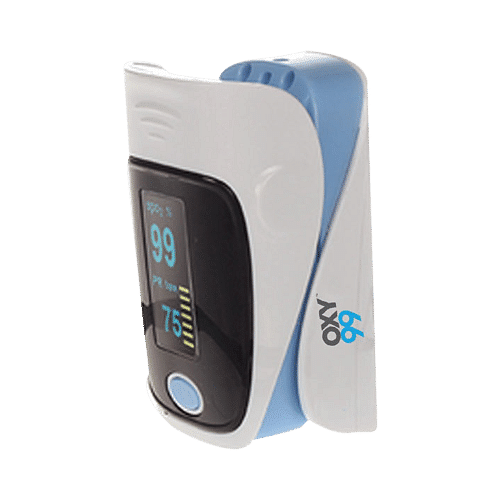
Oxy99 Fingertip Pulse Oximeter
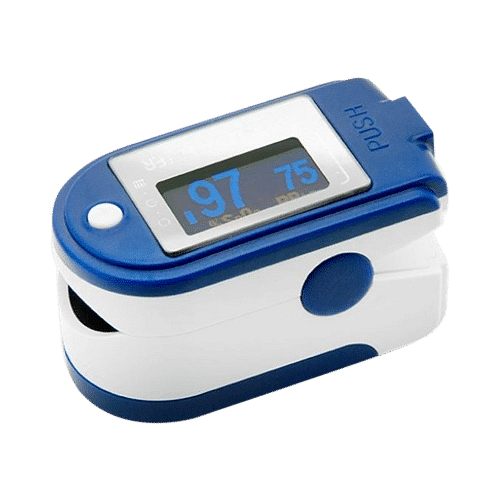
Contec CMS50D Fingertip Pulse Oximeter

Lifecare Medica Oxygen Flow Meter
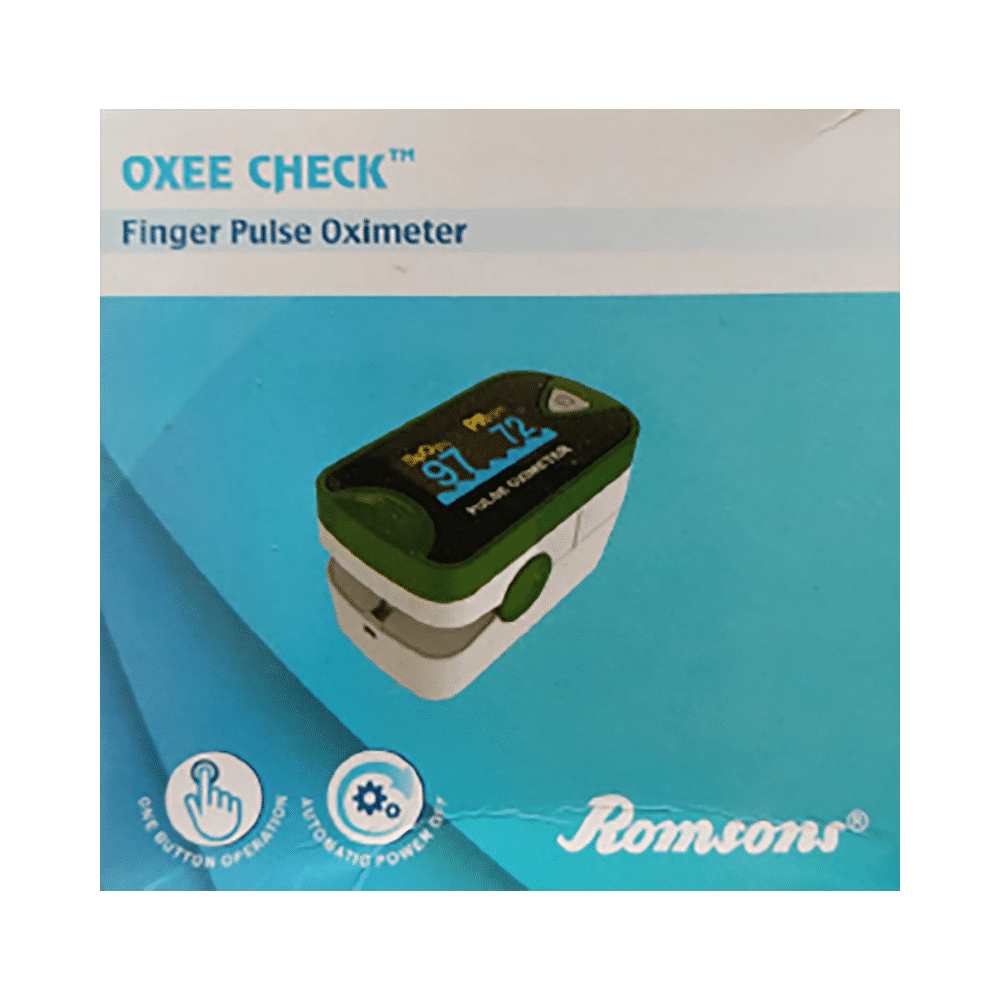
Romsons Finger Pulse Oximeter
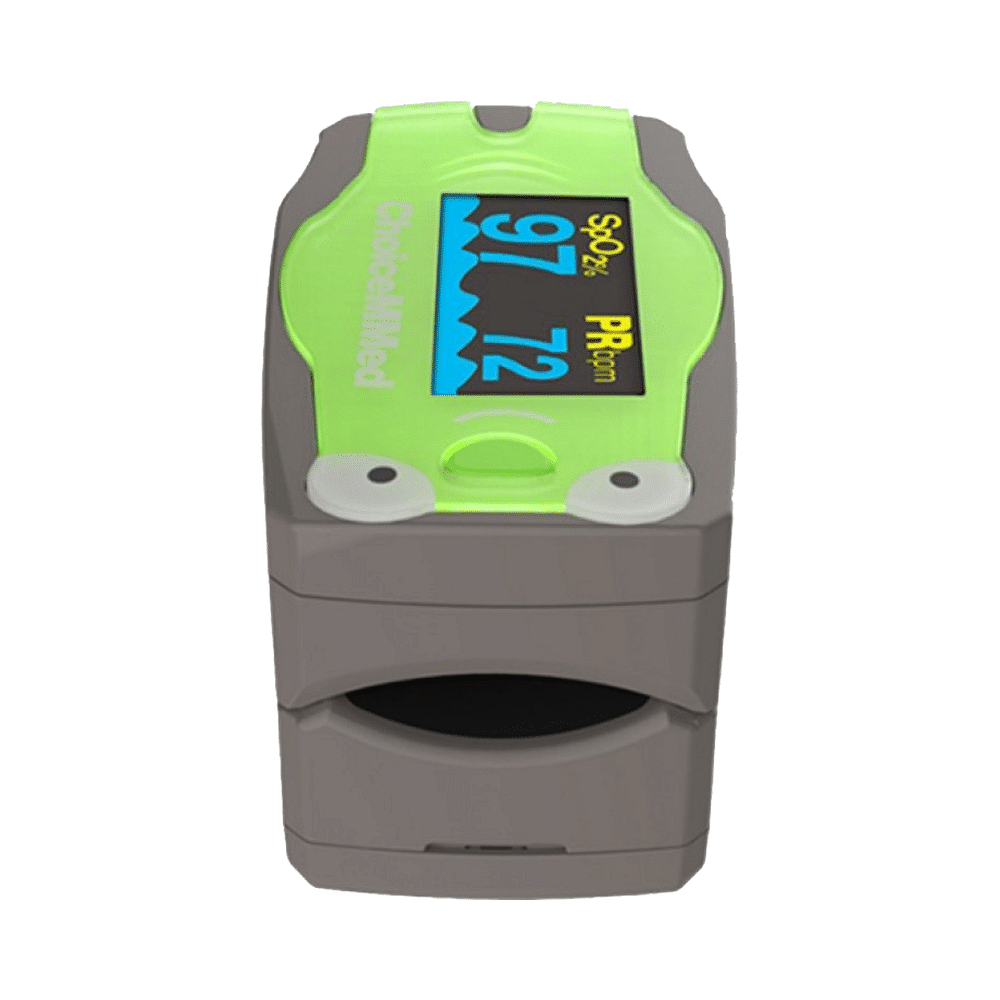
ChoiceMMed MD300C53 Pediatric Fingertip Pulse Oximeter Green
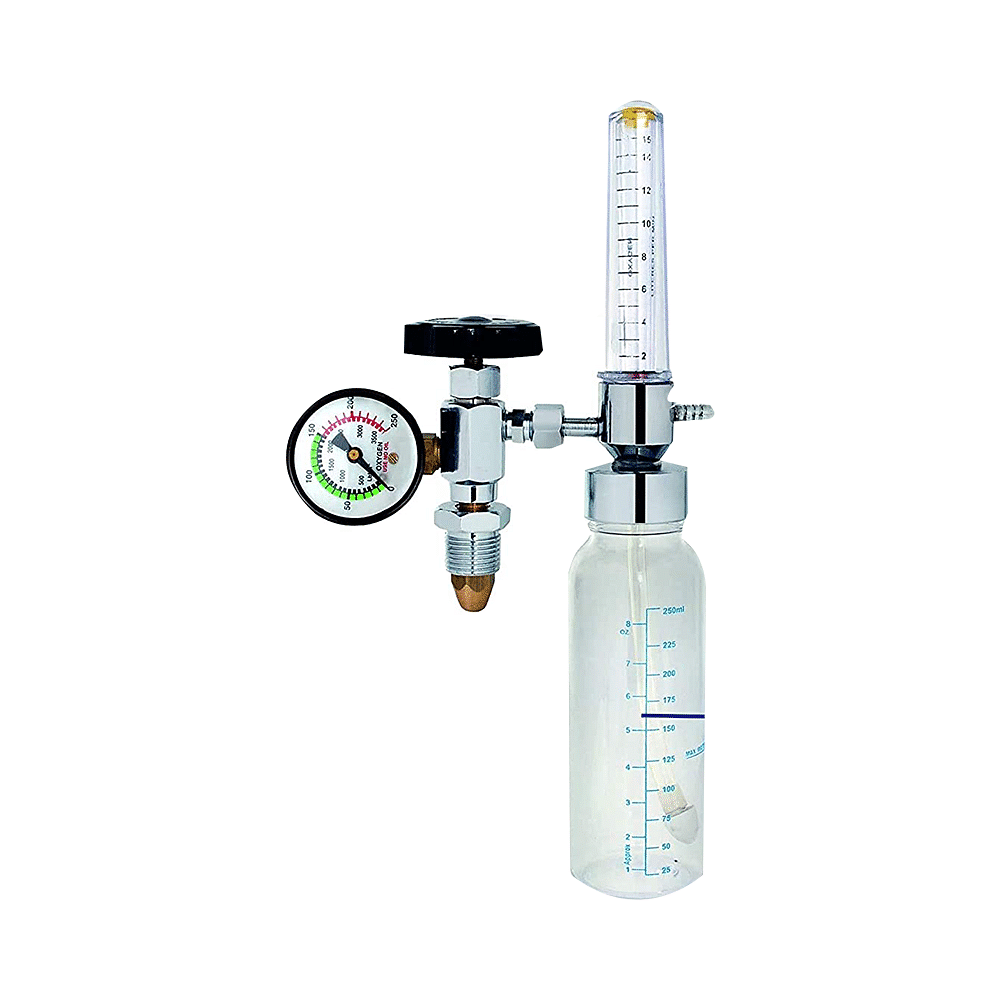
Industryowl Oxygen Flow Meter with Rotameter & Humidifier Bottle
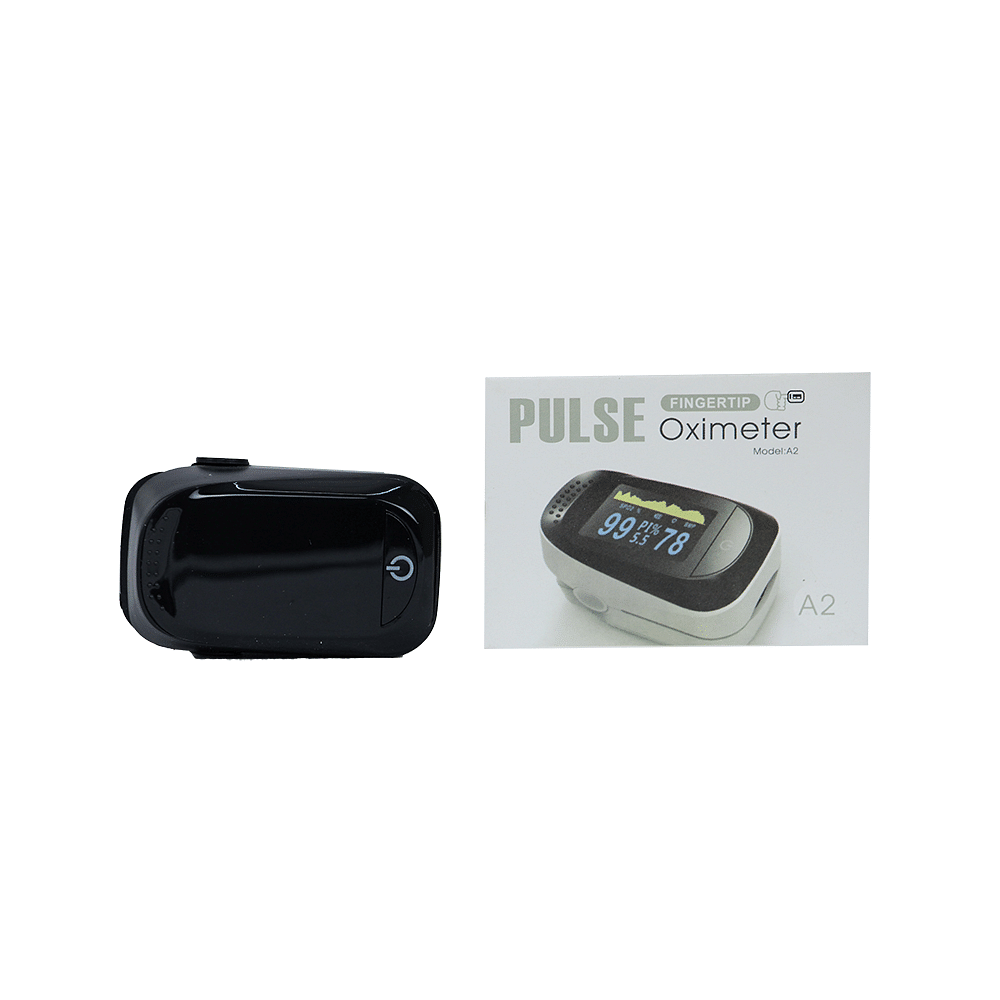
Ethix Pulse Oximeter Fingertip Black

Redgin -XT Tablet

Beurer PO 35 Fingertip Pulse Oximeter

OxyChek Finger Pulse Oximeter
Frequently asked questions
How do you use Dr. Trust Pulse Oximeter?
You have to place your finger in the slot provided in the device. The readings are displayed on the LED display. The device shows you the percentage of the arterial hemoglobin, pulse rate as well as pulse strength at the touch of a button along with oxygen saturation (SpO2).
What is BPM on an oximeter?
BPM stands for beats per minute, referring to your pulse rate which is an estimation of the number of times your heart contracts per minute. According to the Mayo Clinic, normal pulse rate values for adults range from 60 to 100 beats per minute (bpm). In general, a lower heart rate at rest implies more efficient heart function and better cardiovascular fitness.
What is SpO2?
It is the oxygen level of your body as calculated by the pulse oximeter. SpO2 or oxygen saturation level is the percentage of how much oxygen your blood is carrying compared to the maximum amount it can carry. This number should ideally be above 90-92%. A percentage lower than that may require medical consultation.
What are the 2 readings on a pulse oximeter?
A pulse oximeter measures two things: blood oxygen saturation (SpO2) and pulse rate/heart rate. Pulse oximeters can help in detecting silent hypoxia where a person's oxygen levels may fall below normal without showing any symptoms. On-time detection helps in getting it treated before it takes a rough turn.
Is 92 blood oxygen level OK?
Normal pulse oximeter readings usually range from 95 to 100 percent. Values under 90 percent are considered low.
How do I check my oxygen level?
To check your oxygen level, you need to use a pulse oximeter that measures the amount of oxygen in the blood. The SpO2 reading on the oximeter is an estimation of the amount of oxygen flowing in your blood.
What are the symptoms of insufficient oxygen in the blood?
The symptoms of low blood oxygen levels are shortness of breath, headache, restlessness, dizziness, rapid breathing, chest pain, and confusion.


